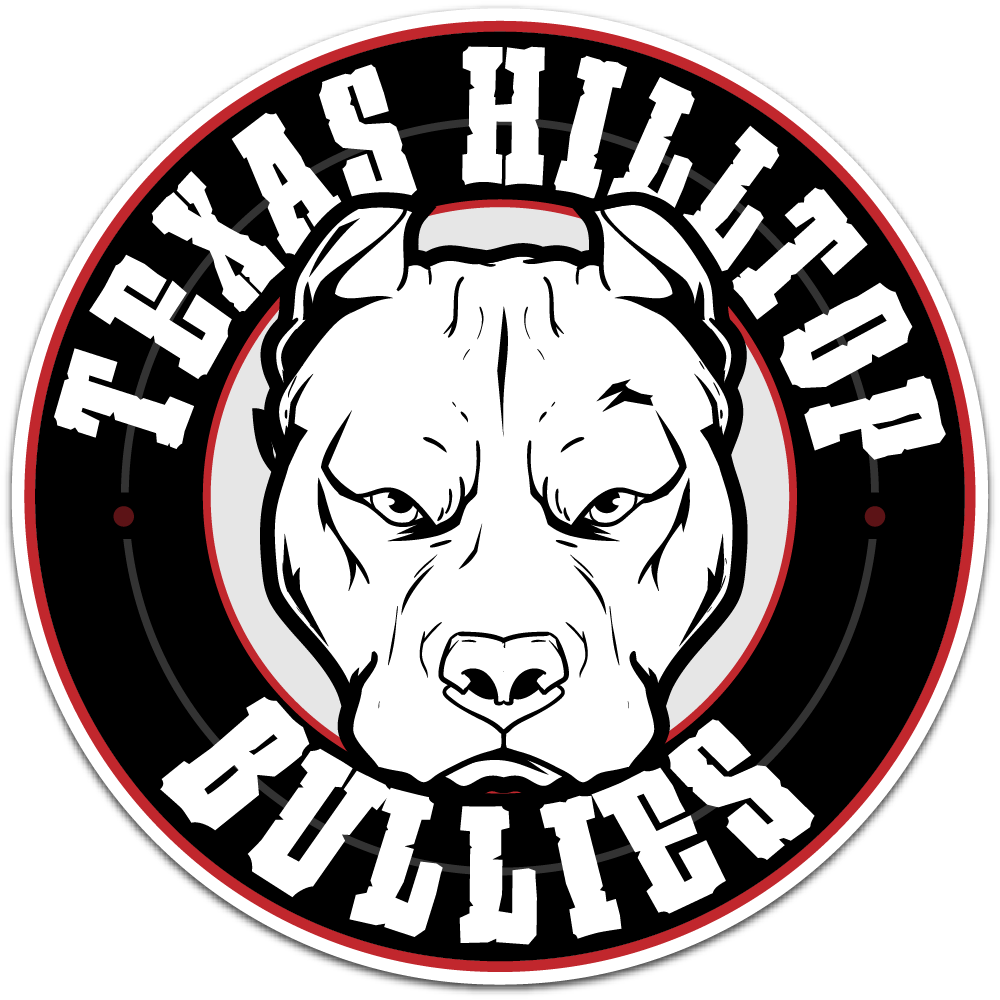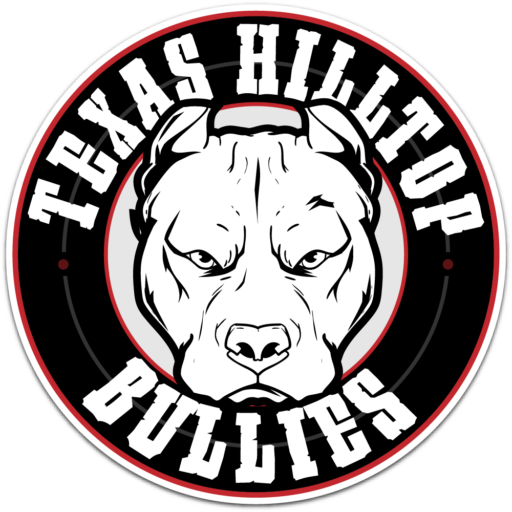
FAQ
Temperament
Our XL and XXL American Bullies and French Bulldogs are known for being incredibly loving and affectionate.
These dogs are great with families and enjoy spending time with their human companions. They are strong and resilient animals, with a natural protective instinct, but they are not aggressive.
They are not the best fit for inexperienced breeders, as they can be stubborn at times. However, they are very forgiving and friendly to children, other dogs, and strangers.
One of the remarkable things about these dogs is their high pain tolerance.
They can withstand rough play and even pain inflicted by children without getting aggressive. They are very well-mannered and rarely snarl or bite. Correct socialization is key for normal interaction between these dogs and children.
These dogs have an agreeable temperament and are always willing to play with other dogs. They have a physically impressive, athletic built that combines strength and agility. They make for reliable and trustworthy family companions.
About the Breeds
American Bullies
A breed of dog called the American Bully was created in the United States between 1980 and 1990. This breed was developed by many breeders, rather than just one person or club, using a foundation of American Staffordshire Terriers to several bulldog-type breeds. The American Bully was designed to be a family companion dog and has become increasingly popular over the years.
Despite being a young breed, American Bullies have already facilitated the formation of multiple clubs and organizations, such as the American Bully Kennel Club (ABKC), United Bully Kennel Club (UBKC), Bully Breed Kennel Club (BBKC), and United Canine Association (UCA). They are also popular in Europe and Russia.
The American Bully has a wide variety of exteriors, with body type, built, and proportions varying much more than those of other purebred dogs. However, they closely resemble their ancestors and are easily confused for other breeds. American Bullies may be either significantly smaller or larger, and their coat markings are not regulated.
Today, American Bullies are primarily companion dogs, but they may also be used to complete other tasks. Despite being a young breed, they are popular in the US, with a large population of registered and unregistered dogs.
French Bulldogs
French Bulldogs, also known as "Frenchies," have a rich history that dates back to the 19th century. The breed was created in England by breeding English Bulldogs with local ratters and terriers, which resulted in a smaller, more compact version of the English Bulldog.
French Bulldogs were first brought to France by English lacemakers, who migrated to the country during the Industrial Revolution.
The breed quickly became popular among the French bourgeoisie and was given the name "Bouledogue Français." Frenchies also gained popularity in the United States in the early 20th century, and they were recognized by the American Kennel Club in 1898.
Today, French Bulldogs are a beloved breed and are known for their affectionate and playful personalities.
what's for dinner
Feeding an American Bully puppy during the first year of their life is crucial for their skeletal system development, teeth, and coat. Improper nutrition may lead to rickets, incorrect paw size, and a lackluster coat. To ensure a balanced diet, pay attention to your pet's activity level, environment, and metabolism particularities. Here are some guidelines to keep in mind:
Feeding frequency:
- Puppies should be fed 4-5 times a day, or about every 3-4 hours, starting at 2-3 months of age.
- At 3-4 months, portions should be increased and meals reduced to 3-4 a day.
- 4-6 month-old puppies are fed 3 times a day, at 7-9 months feedings are reduced to 2-3 times a day, and twice daily after 9-12 months of age.
- Always leave a bowl of fresh water accessible to your puppy.
Balanced nutrition should include:
- Proteins (Meat & Fish)
- Fat & Carbohydrates
- Vitamins & Minerals
- Microelements
Keep in mind:
- Overfeeding your dog may lead to lethargy and dry, flaky skin.
- Feeding very fatty meats, especially pork, is not recommended.
- Give your dog raw saltwater fish once a week and do not feed your dog raw freshwater fish.
- Raw bones (excluding tubular), scalded with boiling water, can be included in moderation.
- Cooked bones may cause constipation. Never give your dog tubular bones.
- Give your dog a raw egg once a week with food.
- Grind raw vegetables and also feed whole vegetables and fruit to your pet.
- Fruits and berries should be given in moderation. Avoid hot seasonings, sweets, and pastries.
- The food temperature must not exceed 30 degrees Celsius. Never give hot or frozen foods to your pet.
Basic feeding guidelines:
- Feed your dog at the same time every day.
- Any food not eaten within 20 minutes should be taken away.
- If you feed your dog a natural diet, it should be room temperature, fresh, and thick.
- If you feed your dog dry food, follow the directions on the packaging.
- Dogs must always have access to a bowl of clean water.
Elevated feeding:
- Dogs of tall breeds should be fed from a bowl elevated to their chest level, to stimulate proper skeletal development.
- Bowls with moveable supports are great for this purpose, as they can be shifted up as the puppy grows.
Raw diet for American Bully:
- A raw diet is recommended, consisting of predominantly meat, raw muscle meat, organs, fatty tissue, and bones.
- The diet should also include fruits and vegetables.
- Potential benefits include shinier coats, healthier skin, cleaner teeth, higher energy levels, smaller stools, odorless breath and body, flake-free and itch-free skin, and decreased visits to the vet.
traits & characteristics
This breed's main traits include a strong, powerful neck and wide chest with a well-developed muscular system. Their weight may range from 70 to 160 pounds and all colorings are allowable; the coat may be a solid color or have markings.
Our breeds can consist of varying colorings, such as champagne (red nose), lilac, lilac tri, blue (bluenose), as well as the most popular Merle/Lilac Merle. They are more than just a pet; they reflect their owner's lifestyle and worldview.
They don't forgive weakness and don't ask for indulgence. This breed is for strong-spirited, self-sufficient people, and it's only in their hands that they will shine like a skillfully cut diamond and showcase their best features.
This breed is known and prized for being multifunctional: its athletic exterior, courageous temperament, sturdiness, strong spirit, as well as being manageable, loving, and infinitely loyal to its family. They are ideal for families with children.
Diarrhea
Diarrhea is a common problem that affects not only humans but also various animal species, including puppies. While it's normal for dogs to defecate 2-4 times a day with firm-textured feces, frequent runny or watery stools should be a cause for concern. Neglecting such symptoms may have serious consequences and even result in the loss of your pet's life. To help you understand the causes and treatment options for dog diarrhea, we've compiled the following information:
Causes of diarrhea in dogs:
- Incorrect feeding or poisoning with bad-quality food, chemicals, toxic substances, or medicine
- Sudden changes in diet, such as transitioning from dry to wet food or vice versa
- Acute viral infections like hepatitis, enteritis, and distemper
- Internal organ infections or contracting infectious diseases
- Presence of parasites like tapeworms
- Stomach flora imbalance or vitamin deficiency
- Indigestion or malfunctioning of the digestive system
- Allergic reactions
- Malignant (cancerous) tumors
- Mechanical damage to the stomach walls due to the presence of a foreign object
- Use of antibiotics that damage the intestinal flora
- Treating dogs with medications and vitamins intended for humans, causing loose stools due to incorrect dosage
Immediate measures to be taken:
- If you notice any symptoms of diarrhea, take immediate steps towards recovery.
- Prolonged diarrhea may lead to dehydration and even the animal's death.
- Contact a veterinarian immediately for bloody diarrhea or yellow, gray, black, or runny green stool.
- Do not attempt to treat acute, bloody, or slimy diarrhea at home or force feed an animal that is refusing to eat.
Treatment options:
- Short-term, mild diarrhea may be treated by the owner at home, while severe cases of diarrhea must be treated by eliminating their cause.
- Halt food intake in dogs with runny stools, skip several meals or withhold food for 24 hours.
- The dog must have unlimited access to fresh water to prevent dehydration.
- The next morning, offer the dog some chicken broth or thin rice gruel with minced chicken breast.
- Do not force the dog to finish the entire portion.
- Avoid introducing heavy, fatty foods immediately after the dog has recovered.
- Continue feeding gruel to your pet for a while.
- If appetite loss continues for an extended period, take your dog to the vet and discuss further plans for their nutrition.
Parvo
Canine parvovirus is a viral infection that specifically affects dogs. The disease can manifest in two forms, with the digestive form being more common than the cardiac form.
Symptoms of the digestive form include vomiting, diarrhea, weight loss, anorexia, and dehydration. Symptoms of the cardiac form include a weakening of the heart muscle in puppies between 6 weeks and 6 months of age.
Parvovirus enteritis can cause severe bloody diarrhea, lethargy, anorexia, fever, vomiting, significant weight loss, inflammation of the mucous membranes, and increased heartbeat. The disease is caused by a mutated strain of the common parvovirus, type II canine parvovirus.
The virus is usually passed through direct contact with an infected animal or their feces, and can be transmitted by an owner who carries the virus into their home on their shoes or other surfaces. The virus can survive in soil for years and is resistant to weather changes and most cleaners.
Vaccination is the most effective preventive measure against the parvovirus, and puppies should be vaccinated at 4, 8, and 16 weeks and then at 9 and 12 months of age. It is also recommended to limit a dog's contact with other animals for two weeks after the last booster shot.
If a dog exhibits any symptoms of parvovirus, it is important to consult a veterinarian immediately.
